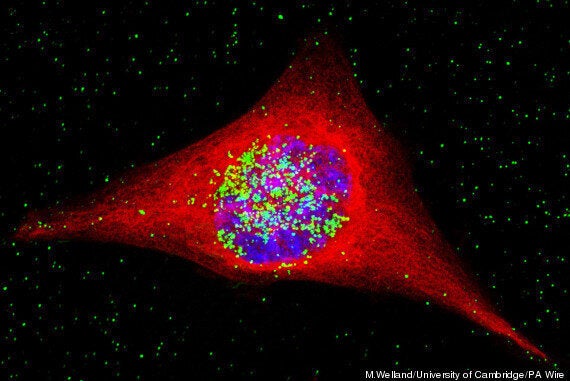Your favourite piece of jewellery may be made out of gold, but did you know the material could also be used to save your life?
Tiny particles of gold could hold the key to treating the most common form of brain cancer, scientists have said.
The "Trojan horse" treatment involves smuggling tiny nanoparticles of gold into the brain to kill tumour cells.

The ground-breaking technique could eventually be used to treat glioblastoma multiforme, which is the most common and aggressive brain tumour in adults, and notoriously difficult to treat, University of Cambridge researchers said.
Many sufferers die within a few months of diagnosis, and just six in every 100 patients with the condition are alive after five years.
Mark Welland, professor of nanotechnology at Cambridge's St John's College, said: "The combined therapy that we have devised appears to be incredibly effective in the live cell culture.
"This is not a cure, but it does demonstrate what nanotechnology can achieve in fighting these aggressive cancers.
"By combining this strategy with cancer cell-targeting materials, we should be able to develop a therapy for glioblastoma and other challenging cancers in the future."
The research involved engineering nanostructures containing both gold and cisplatin, a conventional chemotherapy drug.
These were released into tumour cells that had been taken from glioblastoma patients and grown in the lab.
Once inside, these "nanospheres" were exposed to radiotherapy. This caused the gold to release electrons which damaged the cancer cell's DNA and its overall structure, enhancing the impact of the chemotherapy drug.
The process was so effective that 20 days later, the cell culture showed no evidence of any revival, suggesting that the tumour cells had been destroyed.
While further work needs to be done before the same technology can be used to routinely treat patients, researchers say the results offer a highly promising foundation for future therapies.
Importantly, the research was carried out on cell lines derived directly from glioblastoma patients, enabling the team to test the approach on evolving, drug-resistant tumours.
SEE ALSO:
What Are The Signs And Symptoms Of Brain Tumours?
Brain Cancer Sufferers Given New Hope with Treatment That 'Allows Cancer Drugs In'
Colin Watts, a clinician scientist and honorary consultant neurosurgeon at the Department of Clinical Neurosciences, said: "We need to be able to hit the cancer cells directly with more than one treatment at the same time.
"This is important because some cancer cells are more resistant to one type of treatment than another. Nanotechnology provides the opportunity to give the cancer cells this 'double whammy' and open up new treatment options in the future."
To date the cancer has proven very resistant to treatments. One reason for this is that the tumour cells invade surrounding, healthy brain tissue, which makes the surgical removal of the tumour virtually impossible.
Used on their own, chemotherapy drugs can cause a dip in the rate at which the tumour spreads.
But in many cases this is temporary, as the cell population then recovers.
Scientists have been researching ways in which gold nanoparticles might be used in treatments for some time and chose gold because it is a benign material which in itself poses no threat to the patient, and the size and shape of the particles can be controlled very accurately.
When exposed to radiotherapy, the particles emit a type of low-energy electron, known as Auger electrons, capable of damaging the diseased cell's DNA and other intracellular molecules.
This low-energy emission means that they only have an impact at short range, so they do not cause any serious damage to healthy cells that are nearby.